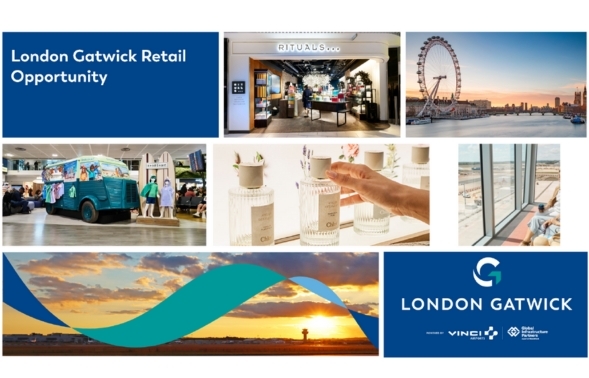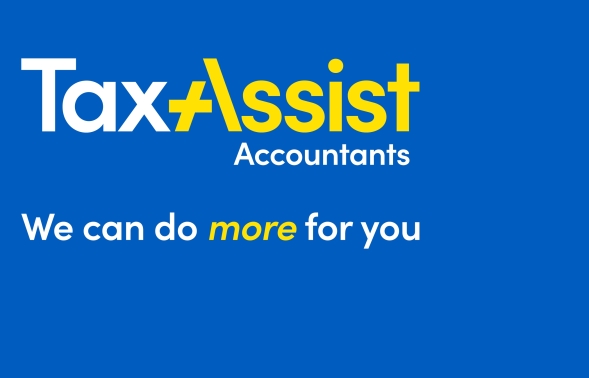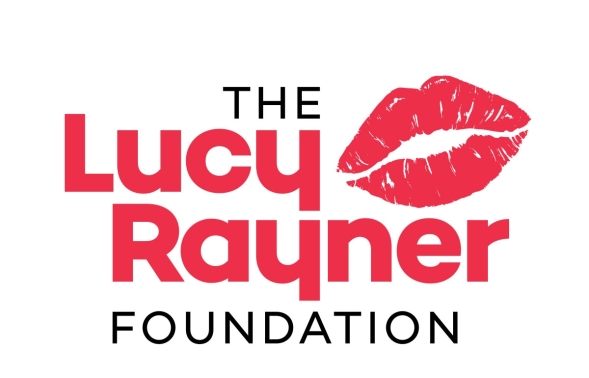The single biggest problem in communication is the illusion that it has taken place."
~ George Bernard Shaw
"…the illusion that it has taken place." Isn't that an interesting observation?
It's 4 pm, and the email newsletter urgently needs the content completed. We've written it, checked it, and sent it. Finally, it's been delivered, and we can check that people are reading it too. Now we can breathe again, happy in the knowledge that our carefully crafted message has been communicated.
But has it? At this point, all you can be sure of is that you sent the newsletter.
This concept of communication being nothing more than an illusion is probably now making you appreciate how frequently you believe your own messages land and are fully understood. It is, isn't it? When in reality, you can't be sure that's what's happened at all.
Illusion is defined as being an instance of a wrong or misinterpreted perception of a sensory experience.
In everyday life, and particularly in business, we do our utmost to craft important information, meaningful memos and crucial communiqués that are clear and easy to understand, whilst never actually knowing how the recipients will interpret them.
Those of you with children will know only too well the phrase, "How many times do I have to tell you?" And then there are the wives, husbands and partners who have exclaimed, "But we haven't even had this conversation before!" (mostly men, let's be honest) when you know the subject has been discussed several times previously.
That, right there, is the illusion of communication. Once an exchange has taken place, written or spoken, we're left believing no additional clarification is required. And where complete understanding has not been achieved during a spoken conversation, we simply ask more questions - we ask for clarification. But when the lack of understanding occurs from reading written content, nobody asks for clarification. Instead, people typically give up and move on. You rarely get more than one chance.
"I know you think you understand what you thought I said, but I'm not sure you realise that what you heard is not what I meant."
~ Alan Greenspan, former Chair of the US Federal Reserve
We experience misinterpretation constantly.
From recipes to driving directions, job descriptions to dating, misunderstandings and miscommunications are, frustratingly, part of every life.
There are flat-pack instructions that use diagrams to illustrate how to insert the 32mm hex bolt through the grommet in the sliding hinge overhang, but we can't quite work out the angle that particular sketch is drawn at. Where exactly does that bolt go, again?
Our sat-nav tells us to turn left in 250 metres, but we can see a turning just ahead. Is it that one, or is there another turning we can't yet see? And if we don't turn left now, and that WAS the correct turning, we'll have to go all the way around the one-way system again.
Our nut-milk cartons tell us to 'shake well before use'. Does that mean we should shake it vigorously immediately before we drink it, or shake it hours/day before we plan to use it? You may roll your eyes, but simply saying, "Before use, shake well" makes the instruction unquestionably clear, so why not just say that?
Does flashing your headlights at another driver mean "Thank you", or "No, you go, I'll wait here"? Is it one flash or two? According to the Highway Code, you should, "Only flash your headlights to let other road users know that you are there." Really? If you flash your headlights with that in mind it will only cause utter confusion.
There are literally thousands of everyday examples where one thing was said, but either something entirely different was meant, or it was inadvertently taken to mean so.
One issue we can face is the other person not wanting us to know what they're thinking, so you may ask a perfectly reasonable question in search of clarification, only to receive a confusing or clear-as-mud response.
To illustrate this point, the next time you ask a prospective client if they have a budget for your services (that might cost, say, £5k - £10k), and they answer, "No", that should be the end of it - question asked and answered. However, if you tell them it's going to cost £100k, you'll soon discover that they do indeed have a budget.
How often do we hear or say: "No, that's not what I said at all…" or, "Ahhh, okay, I didn't realise that's what you meant" or, "But I thought you said…"?
Given how almost every word we utter, every flick of the head, wink of an eye, smile, smirk or wince is communicating something or other, you'd think we'd be absolute masters of it, yet why we are so frequently misunderstood remains a mystery.
Writing or saying something is definitely communicating it, but it doesn't automatically follow that communication has happened, and the latter is usually because you weren't as clear as you first thought. And that brings us right back to the illusion.
"I guess I should warn you, if I turn out to be particularly clear, you've probably misunderstood what I said."
~ Alan Greenspan, again
In business, how can we learn to be clearer and know that our communication will not be misunderstood?
Typically, in situations where a miscommunication comes to light, it's often the listener/reader who is blamed for not paying attention or listening, or simply not getting it, because you need no further convincing that your delivery was perfect in every way. But is not understanding really their fault? Is it not your responsibility, as the communicator, to ensure the recipient understands precisely what you mean?
Imagine your messaging is based on an instruction. It's reasonable to argue that everything Nike does and sells, and every element of their messaging is based on the instruction in the logo's strapline: Just Do It.
Tesco did something similar with their 'Every Little Helps' strapline/campaign. It's a statement that's almost an instruction, and definitely something you can't argue with, as every advert they place, every banner, poster and campaign message centres around the single, irrefutable fact that, every little helps.
What can you do to improve communication?
In your own organisation, how can you work towards making your messaging clear and as unlikely to be misunderstood or misinterpreted as possible?
This is not to say consideration is not being given to every piece of content you or your team write. It's more about whether anyone considers the essence of the message being delivered through the text, rather than checking whether or not the text is grammatically correct.
Initially, the answer is to simply stop assuming the first thing that pops into your head is good enough to go. Sometimes it will be, most times it won't. Just pause and really think about what you're about to write for your next post, advert or newsletter. What, exactly, is the message you want the recipient to understand and embrace?
And before you write anything, consider the following points, as they will help you craft clear, unambiguous messaging.
MESSAGE: Words are not always the message; they are simply the vehicle that delivers the message.
For example, the sign outside your local supermarket says, "We're open from 9 am to 6 pm." The hours are not the message; they are parameters. The message is what you infer from the sign, and from the parameters, you deduce that you can't arrive at 5:55 pm and expect to do your weekly shop, but they didn't need to tell you that.
Whereas there's nothing to deduce from an ice cream parlour selling "the best ice cream". You know exactly what they do and you wouldn't ask if they sell car tyres as well as ice cream.
Look carefully at your own messaging for anything that might be expecting the reader to figure out not what you've said, but what you really mean.
FEELING: How would you like the recipient to feel when they read or hear your message? In order to have them react in a certain way or feel a particular emotion, you'll have to think deeply about how your choice of words conveys the message. If you want them to experience a fear of missing out and the need to act now, your choice of words would be very different from those used to make them feel compassion.
LANGUAGE: Use their language, not yours.
Holiday companies do this extremely well, because whilst they know the notion of travel is romantic, they also know we'd prefer not to have to think about the hassle of luggage, taxis, airports, delays and so on. So, holiday companies skip all the practical stuff and go straight to the language you can relate to; golden beaches, exciting cities, stylish bars, romantic restaurants and happy, fun, family time.
You buy what you can relate to because of the emotional response it creates in you - even if you don't realise it.
Conversely, technology companies don't always get this right because they're wrapped up in technicalities because they believe it's sexy and hi-tech. How describing a TV that potentially anyone could own as, "Smart 4K Ultra HD HDR Neo QLED", is in any way helpful, is a mystery.
ACTION: What, precisely, do you want them to do with the information you're giving them? What action do you want them to take?
"DO NOT USE THE LIFT IN THE EVENT OF A FIRE" is a pretty clear instruction, but where exactly are the stairs? Why not say, "DO NOT USE THE LIFT IN THE EVENT OF A FIRE. The stairs are to your right"? That might help save lives one day.
ABBREVIATIONS: Try to avoid TLAs (sorry, Three Letter Acronyms), especially in-house/industry sector acronyms.
Why? Because not everyone within your industry or sector will read your content, and they'll have no idea what you're talking about.
As Dan Ariely, a scientist at Duke University, explains, "Acronyms confer a kind of secret insider knowledge; they give people a way to talk about an idea in shorthand. They increase the perceived importance of ideas, and at the same time they also help keep other ideas from entering the inner circle."
Unless you're using commonly known acronyms that need no further explanation, such as LASER, BOGOF, ASAP, RADAR, WIFI or IKEA, you'll only leave your readers confused and irritated. It might seem like fun to use IMHO (in my humble opinion), FWIW (for what it's worth) or FOMO (fear of missing out), but like a bad joke, if you have to explain why it's funny, it really wasn't worth the time and effort.
A perfectly good example of this comes from the early days of 'desktop publishing' and 'word processing' (so many younger people will have no idea what I'm talking about here) when screens were finally able to display the styles selected, such as bold or italic, instead of just the code-tags that produced the style. This technological breakthrough was imaginatively referred to as, 'What You See Is What You Get', or WYSIWYG (pronounced wizzywig).
Unfortunately, it was an acronym that just didn't take hold, hence you very rarely saw WYSIWYG written without the accompanying, '(What You See Is What You Get)', so what on earth was the point of using the acronym?
JARGON: Keep away from cheesy jargon when you're publishing publicly.
Jargon tends to come and go, although many examples exist that came from the technology boom time eras such as the dot-com bubble of the 90s, and remain with us and in use to this day.
We've all been guilty of using cheesy jargon at some point. Here are a few old favourites you're bound to recognise: blue-sky thinking, getting the ball rolling, out of the loop, thinking outside the box, low hanging fruit, run the idea up the flagpole, back to the drawing-board, moving the goalposts, open-door policy, kick a project into the long grass, joined-up thinking, a level playing field, be in the driving seat, and no brainer.
Indeed, it's a no brainer to not use them, unless doing so is purposefully humorous.
CONTEXT: Use context to position your content.
Keep the content relatable and easy to understand by using stories, examples, quotes and humour, where appropriate, as they go a long way towards helping the reader quickly comprehend the meaning of the message you're attempting to convey.
Set yourself or your team a task.
Go back through some of your recent posts, articles, newsletters, sales proposals, etc. and sit down as a team to pore over them, having clarified this exercise is to generate constructive criticism. Dig deep into each piece of text and pick it apart to establish the purpose and meaning behind what was written. Does it really convey the right message? Is there room for ambiguity? Could anything, especially if it's an offer, be misinterpreted or inadvertently misleading?
Treat this as you would a brainstorming exercise, with one person chairing the session and everyone else chipping in - and remember, this is not a witch hunt, and no suggestions or responses are stupid. Its purpose is to establish if anything you put out to prospects or existing customers, either in direct communications or publicly online, could be misrepresenting your organisation's core beliefs and values or is simply not clear.
With each piece you tackle, put yourself in the shoes of the recipient, someone who knows next to nothing about what you do, and ask the following questions; "What does this actually mean?", "What is it trying to tell me?" "Is the message absolutely and completely clear?", "Why, when our contact form says 'parking is available nearby', are we not telling them where the parking is?", and so on.
Summary
The purpose of this is to help you appreciate that clearly communicating with your audience is not always as straightforward easy as it first seems.
It takes time and deep consideration to craft content that delivers. And the fewer the words, the more challenging it is, so keep working at it, even when you think it's ok.
More insight at clivewilson.com

















